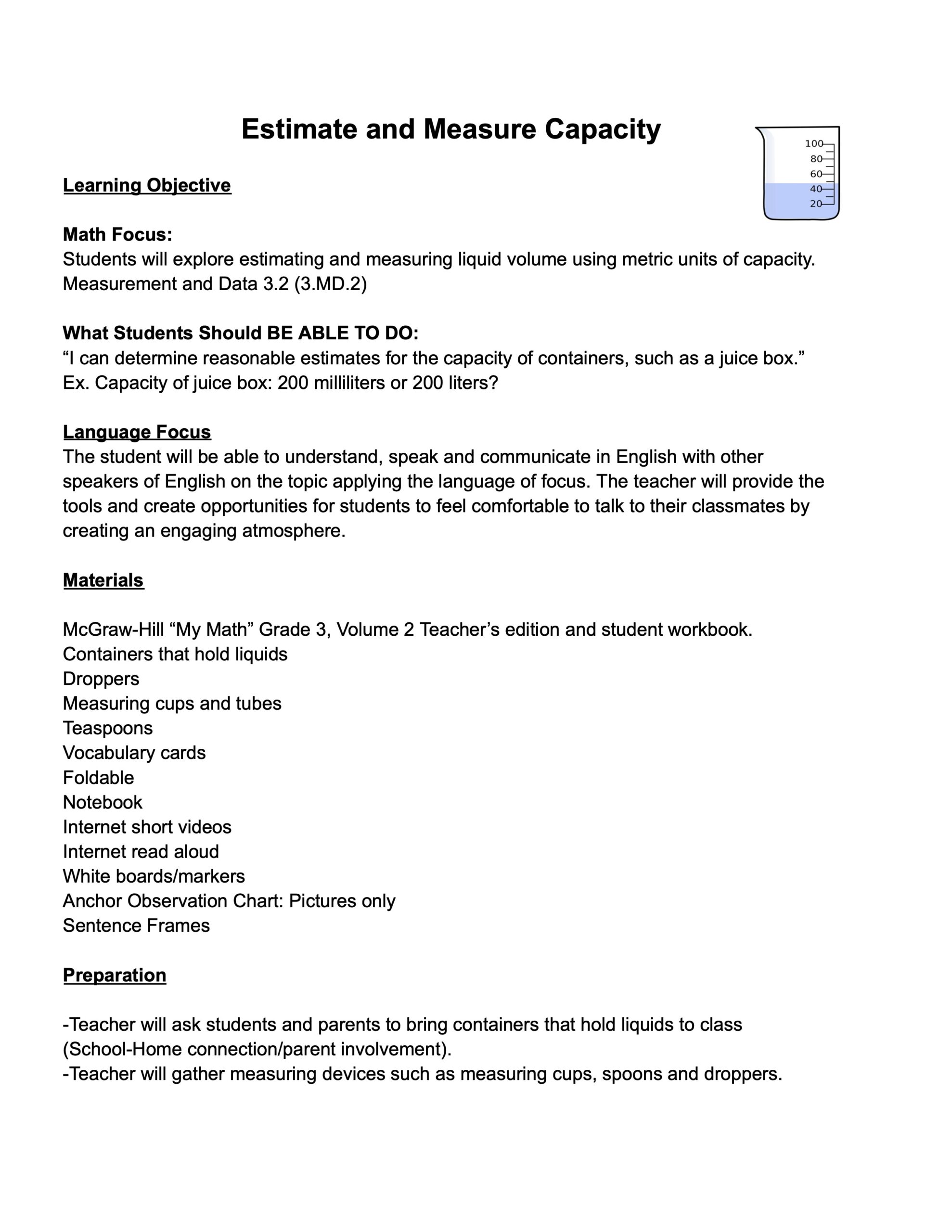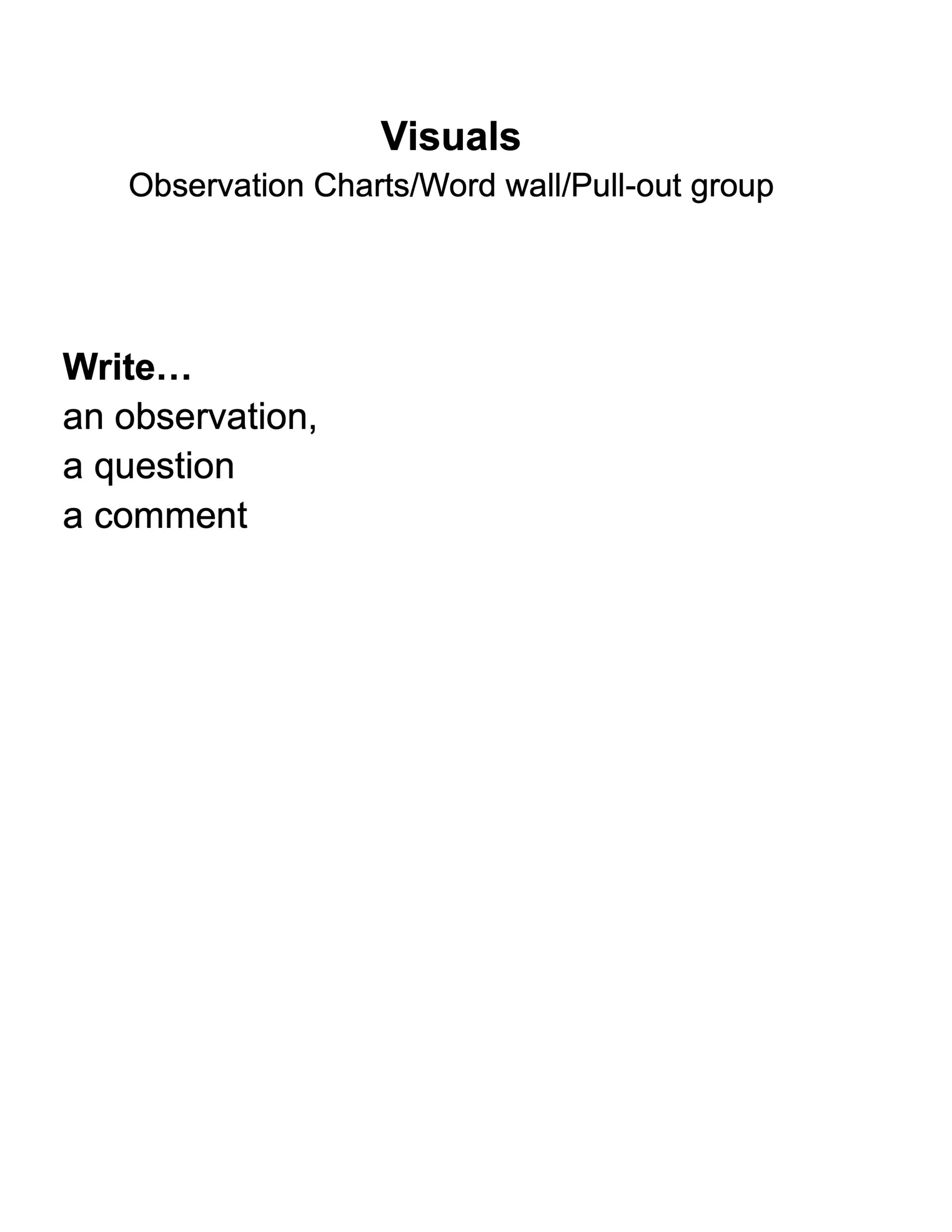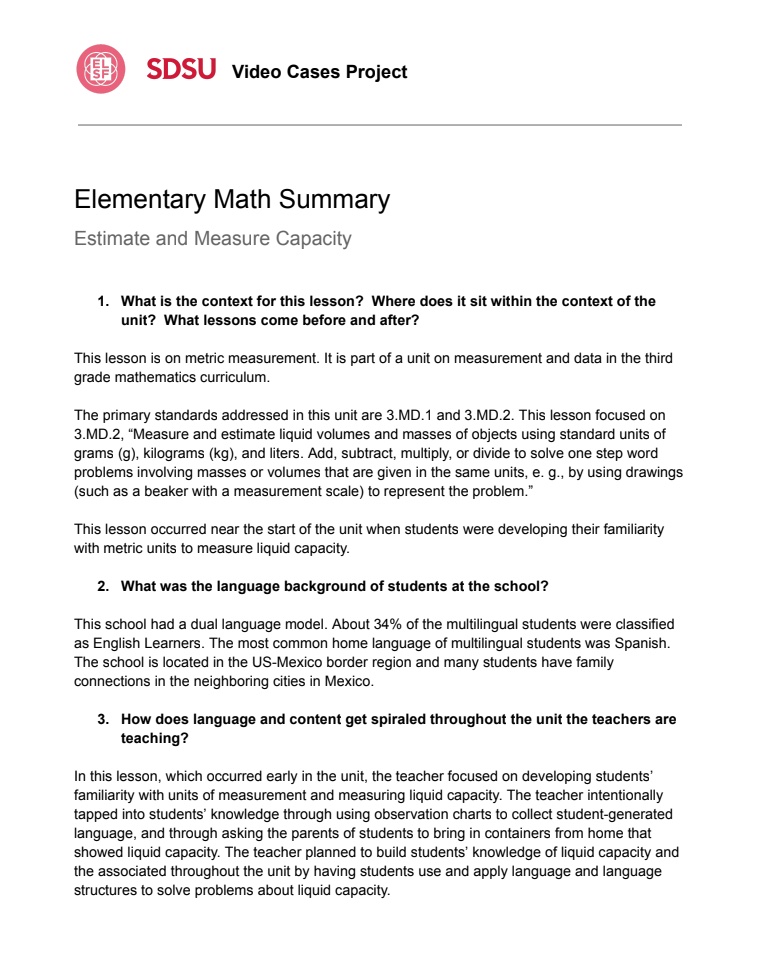Estimate and Measure Capacity
What is the context for this lesson?
This lesson is part of a unit on measurement and data in the third grade mathematics curriculum. The primary standards addressed in this unit are 3.MD.1 and 3.MD.2. This lesson focused on 3.MD.2, which states that students should “Measure and estimate liquid volumes and masses of objects using standard units of grams (g), kilograms (kg), and liters. Add, subtract, multiply, or divide to solve one step word problems involving masses or volumes that are given in the same units, e. g., by using drawings (such as a beaker with a measurement scale) to represent the problem.”
The video recorded lesson occurred near the start of the unit when students were developing their familiarity with metric units to measure liquid capacity
This school had a dual language model. About 34% of the multilingual students were classified as English Learners. The most common home language of multilingual students was Spanish. The school is located in the US-Mexico border region and many students have family connections in the neighboring cities in Mexico.
How are scaffolds embedded throughout the lesson and unit to support learning?
First, the teacher used realia to illustrate measurement in real life. Students brought containers of food items from their houses. Since this lesson took place in a school located near the US-Mexico border, many students had items purchased in Mexico in their houses. These items showed how liquid capacity is measured differently in Mexico (in milliliters and liters) than in the US (ounces, pints, quarts, and gallons).
The writing activity included sentence frames for the students to use as they described the results of their hands-on investigation.
What makes this lesson culturally and linguistically responsive?
In this class all of the students who were classified as English Learners spoke Spanish at home. The teacher, as a Spanish speaker, was able to develop students’ language in the context of the lesson. She was familiar with the students’ linguistic assets and intentionally built on these assets.
One way the teacher made an explicit culturally responsive move was by asking the students to bring in containers from home for the display in front of the classroom. With this display students were able to see the mathematical concepts applied to foods and products that were familiar to them.


